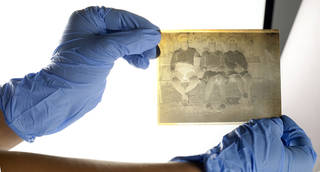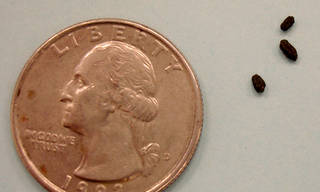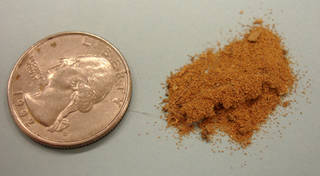
Preservation Self-Assessment Program
Glass Slides (B&W)
Risks of Handling/Use
Generally, handling and use heightens the risk of damage to your materials, be it through neglectful handling (e.g. touching photo emulsion with bare hands) or irresponsible operation of access equipment. This is a risk posed by patrons and staff alike, intentional or not.
Handling and Collections Care
One of the easiest areas to implement protections for collections is through careful handling and sensible collections care. The unfettered use and handling of materials heightens the general risk of damage--be it through neglectful handling (e.g. touching photo emulsion with bare hands) or irresponsible operation of access equipment. Whether intentional or not, this is a risk posed by patrons and staff alike.
Examples of neglect, mishandling, and mismanagement include:
- Pressure-sensitive (such as "Scotch®" brand) tape to mend tears.
- Permanent or volatile inks used to label documents (even the back side).
- Folding materials to fit into a given box or enclosure.
- Poor handling: Not washing and drying hands before handling fragile documents; or not using gloves when handling materials that could be damaged by contact with oils on the skin (for example: gloves must always be worn when handling metals).
- Inadequate storage or exhibit environments, such as areas with excessive climate swings or the use of poor display mounts.
- Inadequate packaging/padding for shipping
- Lack of bibliographic control over holdings, which has led to the harmful and excessive use of unique or vulnerable items.
General Recommendations:
- Use archival-quality folders, boxes, sleeves, and other enclosures to support and house materials of differing shapes and sizes. Avoid use of acidic containers such as brown paper bags and shipping or moving boxes.
- Use only Photographic Activity Test (PAT)-compliant storage enclosure materials for valuable photographic materials.
- Wear gloves (either cotton or nitrile) while handling archival photographic emulsion materials and museum objects.
- Avoid wearing cotton gloves while handling particularly fragile or slippery items, since gloves can hamper tactile senses and lead to accidentally dropping and breaking objects.
- Handle fragile materials as little as possible.
- Use clean, dry hands with carefully trimmed nails to handle materials (even when wearing gloves).
- Use both hands and ask for assistance when handling/moving oversized materials.
- Remove jewelry and accessories, including anything hanging around the neck or clothes that may inadvertently come into contact with and damage materials, such as: necklaces, headphones, glasses hanging around the neck, nametags, scarves, rings, watches, bracelets, ties, loose sleeves, and belts. Avoid wearing loose clothing.
- During transport, use enclosures, supports, book carts, and other equipment as appropriate to minimize the risk to materials. Use materials like foam and snake supports to ensure that items are supported and do not come in contact with other items or with the sides of carts during transport. Always ensure sufficient assistance while transporting items.
- Only use pencils for direct labeling (e.g. on a photo verso) of paper, AV, and photographic materials or folders/enclosures. Never use or carry pens around items and materials.
- Ensure that patrons know and understand guidelines on proper handling of all fragile materials.
- Ensure that staff, volunteers, and patrons are adequately trained in handling collection materials.

Additional Copies
The use of additional copies for reference or display purposes is highly recommended, particularly if the item is an original or valuable. This provides broader access to the content while also protecting the original document from user wear and tear or environmental factors.
Recommendations for care of original object:
- Ideally, originals should be used once to produce an access copy, facsimile, or surrogate;
- Copies would then be put to use by the institution in place of the original, sustaining the wear and tear of patron use or prolonged exhibition.
To learn more about best practices for use and access, including resources for creating digital surrogates, see Use & Access in the User-Manual.
Orientation in Storage
Store vertically with dividers between each slide. May also be stored horizontally (flat), especially the larger or fragmented slides. Enclosures and folders may be stored in hanging files or archival storage boxes. Be mindful of full weight in boxes and on shelves.
Storage Container
Acid-free enclosures and/or folders strongly advised. Each slide should have its own enclosure to protect it from dust, handling damage, and changes in environmental conditions. Glass slides in good condition are best stored in a four-flap enclosure made from archival-quality paper; sleeves and envelopes are acceptable. Broken slides or delaminating slides should be stored flat in a sink mount, also made from archival paper. Position photo emulsion side away from seams in paper enclosures. Such seams (if any) should be on the sides of the enclosure, not down its center. Wood cabinets should be avoided. Enameled steel, stainless steel, or anodized aluminum are preferred for storage equipment. All storage materials should pass the Photographic Activity Test (PAT) as specified in ISO Standard 18916:2007.
Display Recommendations
Responsible display practices ensure the long-term preservation of collections. Light levels in the exhibition area should be kept low. Appropriate filters should be used to minimize exposure to ultraviolet light. Display cases should be enclosed and sealed to protect their contents, and their items should be securely framed or matted using preservation-quality materials that have passed the Photographic Activity Test (ISO18916). Glass slides should not be exposed to more than 5,000 ft-c hours (50,000 lux hours) per year with a 3-year rest between displays. Hand-colored areas may be particularly light sensitive and should be monitored closely during exhibition.
Labeling
If your item has any kind of labeling on the container, the item itself, or any related material, we highly recommend that you return to the Basic Info section and enter this information in the appropriate field(s).
Physical Damage
The glass supports of glass slides are vulnerable to breakage. Cracking or fragmentation of the emuslion is also common. Glass slides have the same elemental instability of either a silver gelatin, collodion, or albumen negative on glass. Most glass slides, however, are protected by a glass cover, so they tend to be in better condition than negatives. Stereograph slides were given a glass cover only if they were made with an albumen binder. Without a glass cover, the slide is at a higher risk of delamination, flaking, fading, yellowing, and silver mirroring.
Albumen slides may exhibit minute star-shaped cracks in the emulsion.
Collodion glass slides can develop networks of cracks along the edges of the slide that may lead to image loss. Collodion is more stable than gelatin but is susceptible to image-eliminating abrasion. If your collection includes collodion glass slides, they are more sensitive to abrasion than albumen and should be checked for scratches.
Gelatin slides are susceptible to delamination of the gelatin image-carrying layer. This is usually caused either by poor preparation of the glass surface during manufacture or exposure to extreme high and low relative humidity. Gelatin slides are also vulnerable to oxidative deterioration, which appears as fading, yellowing, and silver mirroring. This is often caused by poor storage enclosures like old cardboard boxes.
Mold / Pest Damage
Mold
The gelatin binder of a photographic emulsion is an especially good nutrient for mold. If your item is exhibiting white or brown patches or if you see a lattice-like growth along the edges, you are most likely viewing mold. Slides stored in hot, humid environments (generally above 65% relative humidity) are most vulnerable to mold, mildew, and fungus contamination. Mold will typically damage the edges of a photographic material first. If mold has eaten into the emulsion, the item will be noticeably and irreparably damaged, exhibiting feathery-like distortions or dull spots on the projected image. Mold can be removed through cleaning and then storing the items in a cold, dry environment, but this should be done responsibly.
Pests
Pests like insects and rodents tend to like paper and textile materials more than glass-based materials. That said, pests can still do damage. When assessing the exposure of your collections to pests, it is necessary to look not just at the materials themselves and their containers, but also at the larger environment. Insects and rodents tend to leave droppings in areas they inhabit. Insects tend to leave behind a substance called frass, which is the undigested fibers from paper. If you see droppings and/or frass in the storage area, it is a strong sign that your materials are being exposed to pests. Small, irregular holes on paper-based enclosures are also a sign that pests have attacked your materials.
Some tips for reducing your materials' exposure to pests are to refrain from eating anywhere near your collections materials. Crumbs draw pests, so keep food far away from your collections. Another tip applying to both pests and mold is to be cautious about donated materials when you receive them. Pests and mold can hitch a ride into your facility on these materials, so having a good, clean staging area where you can inspect donated items for, among other things, pest and mold evidence can help you reduce your storage environments' exposure to both.


Binder Identification
The glass supports of glass slides are vulnerable to breakage. Cracking or fragmentation of the emulsion is also common.
Albumen slides may exhibit minute star-shaped cracks in the emulsion.
Collodion glass slides can develop networks of cracks along the edges of the slide which may lead to image loss. If your collection includes collodion glass slides, they are more sensitive to abrasion than albumen slides and should be checked for scratches.
Gelatin slides are susceptible to delamination of the gelatin image-carrying layer. This is usually caused either by poor preparation of the glass surface during manufacture or exposure to extreme high and low relative humidity. Gelatin slides are also vulnerable to oxidative deterioration, which appears as fading, yellowing, and silver mirroring. This is often caused by poor storage enclosures like old cardboard boxes.
Glass Covers
Lantern slides often have a glass cover in addition to its glass support and are sealed along the edges with strips of black tape. Stereograph slides were given a glass cover only if they were made with an albumen binder. Stereograph slides are rectangular and feature two nearly identical images side-by-side; lantern slides vary in size but are often nearly square and contain one image. Without a glass cover, the slide is at a higher risk of delamination, flaking, fading, yellowing, and silver mirroring. Acidic environments and enclosures spur these forms of oxidative deterioration along. Gelatin slides are prone to delamination of the image layer. Delaminating emulsions can be protected under a plate of glass.
Fading, Staining, and Discoloration
Silver-gelatin images often exhibit silver mirroring due to oxidation, causing the silver particles to rise to the top of the gelatin layer. This is typically more acute along the edges and in darker areas of the image. Image fading is first and most apparent in highlights. Discoloration (yellow-brown) and fading in highlights, at edges, or across the image is often a symptom of either air pollutants or poor storage materials. Glass plate slides may also exhibit signs of glass deterioration, including a whitish surface haze and/or an efflorescence of viscous droplets.
If you are aware of airbourne pollutants in the space that your material is housed, be certain to check for discoloration and silver mirroring. Airbourne pollutants initiate chemical reactions that may stain and degrade support/base materials and accelerate the fading, staining, or loss of photographic and print/writing media. Sulfur dioxide, hydrogen sulfide, and ozone cause oxidation in silver images and contribute to silver mirroring or yellowing.